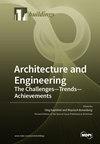Evaluating the Impact of CO2 on Calcium SulphoAluminate (CSA) Concrete
IF 3.1
3区 工程技术
Q2 CONSTRUCTION & BUILDING TECHNOLOGY
引用次数: 0
Abstract
The construction industry is a significant contributor to global CO2 emissions, primarily due to the extensive use of ordinary portland cement (OPC). In response to the urgent need for sustainable construction materials, calcium sulphoaluminate (CSA) cement has emerged as a promising alternative. CSA cement is renowned for its low carbon footprint, high early-age strength, and superior durability, making it an attractive option for reducing the environmental impact of construction activities. While CSA cement offers benefits in carbon emissions reduction, its susceptibility to carbonation presents challenges. Although the body of literature on CSA cement is rapidly expanding, its adoption rate remains low. This disparity may be attributed to several factors including the level of scientific contribution in terms of research focus and lack of comprehensive standards for various applications. As a result, the present study sets out to track the research trajectory within the CSA cement research landscape through a systematic literature review. The study employed the Prefer Reporting Item for Systematic Review and Meta-Analysis (PRISMA) framework to conduct a literature search on three prominent databases, and a thematic analysis was conducted to identify the knowledge gap for future exploration. The study revealed that while CSA concrete demonstrates superior early-age strength and environmental resistance, its susceptibility to carbonation can compromise structural integrity over time. Key mitigation strategies identified include the incorporation of supplementary cementitious materials (SCMs), use of corrosion inhibitors, and optimization of mix designs. The review also highlights the global distribution of research, with notable contributions from the USA, China, and Europe, emphasizing the collaborative effort in advancing CSA concrete technology. The findings are crucial for enhancing sustainability and durability in the construction sector and advancing CSA binders as a sustainable alternative to traditional cement.评估二氧化碳对硫铝酸钙(CSA)混凝土的影响
建筑行业是全球二氧化碳排放的重要来源,这主要是由于普通硅酸盐水泥(OPC)的广泛使用。为满足对可持续建筑材料的迫切需求,硫铝酸钙(CSA)水泥已成为一种前景广阔的替代材料。CSA 水泥以其低碳足迹、高龄期强度和卓越的耐久性而闻名,是减少建筑活动对环境影响的一个极具吸引力的选择。虽然 CSA 水泥在减少碳排放方面具有优势,但其易碳化的特性也带来了挑战。尽管有关 CSA 水泥的文献正在迅速增加,但其采用率仍然很低。造成这种差异的原因有多种,包括研究重点方面的科学贡献水平以及缺乏针对各种应用的综合标准。因此,本研究通过系统的文献综述来追踪 CSA 水泥研究领域的研究轨迹。研究采用了系统综述和元分析的首选报告项目(PRISMA)框架,在三个著名数据库中进行了文献检索,并进行了专题分析,以确定未来探索的知识差距。研究表明,虽然 CSA 混凝土具有优异的早期强度和耐环境性,但随着时间的推移,其易碳化性会损害结构的完整性。已确定的主要缓解策略包括掺入辅助胶凝材料 (SCM)、使用缓蚀剂和优化混合设计。综述还强调了研究的全球分布情况,其中美国、中国和欧洲的贡献尤为突出,强调了在推进 CSA 混凝土技术方面的合作努力。这些研究成果对于提高建筑行业的可持续性和耐久性以及推动 CSA 粘结剂成为传统水泥的可持续替代品至关重要。
本文章由计算机程序翻译,如有差异,请以英文原文为准。
求助全文
约1分钟内获得全文
求助全文
来源期刊

Buildings
Multiple-
CiteScore
3.40
自引率
26.30%
发文量
1883
审稿时长
11 weeks
期刊介绍:
BUILDINGS content is primarily staff-written and submitted information is evaluated by the editors for its value to the audience. Such information may be used in articles with appropriate attribution to the source. The editorial staff considers information on the following topics: -Issues directed at building owners and facility managers in North America -Issues relevant to existing buildings, including retrofits, maintenance and modernization -Solution-based content, such as tips and tricks -New construction but only with an eye to issues involving maintenance and operation We generally do not review the following topics because these are not relevant to our readers: -Information on the residential market with the exception of multifamily buildings -International news unrelated to the North American market -Real estate market updates or construction updates
 求助内容:
求助内容: 应助结果提醒方式:
应助结果提醒方式:


